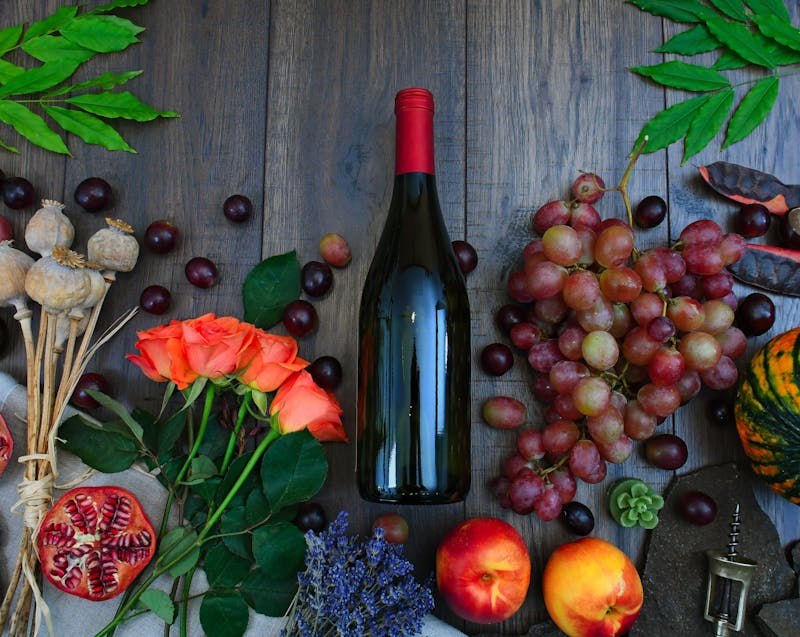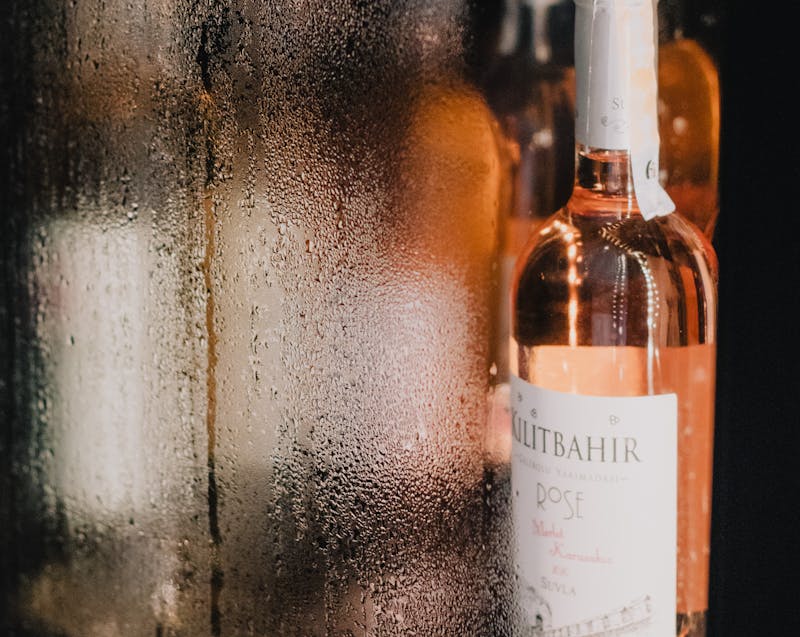
- Cleanliness is non-negotiable: Always sanitize all equipment and bottles to prevent contamination and spoilage.
- Quality ingredients matter: Use fresh, ripe fruits and wine-specific yeast for the best flavor and safety.
- Monitor fermentation carefully: Keep temperatures stable, use an airlock, and track sugar levels with a hydrometer.
- Avoid shortcuts: Allow wine to fully ferment, clarify, and age for optimal taste and stability.
- Safety first: Never use non-food-grade containers or wild yeast; discard any batch with odd smells or mold.
- Proper storage enhances flavor: Age bottled wine in a cool, dark place for several months to improve quality.
- Patience pays off: The longer and more carefully you nurture the process, the better your homemade wine will taste.
Making wine at home is an age-old craft that has captivated people for centuries. From the vineyards of Europe to backyard gardens around the world, the art of turning simple fruit into a delightful drink is both rewarding and fascinating. But while homemade wine can be a fun and creative hobby, it also requires attention to detail and safety. Improper methods can lead to spoilage or even health risks.
This comprehensive guide will walk you through the process of how to make wine at home safely—from preparing your equipment and selecting the right ingredients to fermenting, bottling, and storing your creation.
Whether you’re a homeowner looking to try a new hobby or a wine connoisseur curious about the process, this guide offers the essential knowledge you need to craft wine safely and confidently.
Why Make Wine at Home? The Allure of DIY Winemaking
There’s something deeply satisfying about producing your own bottle of wine. Homemade wine allows you to experiment with flavors, control ingredients, and appreciate the craftsmanship that goes into every sip. Unlike commercial wines, which often rely on preservatives and additives, homemade wine can be as natural as you like.
For homeowners, it’s a creative way to use backyard fruits or locally sourced produce. For wine enthusiasts, it’s an opportunity to understand the nuances of fermentation, taste balance, and aroma development. The process can also be surprisingly affordable and scalable—you can start with a small batch and gradually refine your technique.
Most importantly, making wine at home fosters a deeper appreciation for the beverage itself. It’s not just about drinking; it’s about participating in a timeless tradition that celebrates patience, precision, and passion.
What Do You Need to Make Wine at Home?

Before diving into the winemaking process, preparation is key. Having the right equipment and ingredients ensures your homemade wine is not only delicious but also safe to consume.
Essential Equipment
To make wine at home safely, you’ll need:
- Primary fermenter: A large, food-grade plastic or glass container where fermentation begins.
- Secondary fermenter (carboy): A glass or plastic vessel used for secondary fermentation and clearing.
- Airlock and stopper: These allow carbon dioxide to escape while preventing contaminants from entering.
- Siphon hose: Used to transfer wine between containers without disturbing the sediment.
- Hydrometer: Measures the sugar content and alcohol potential of your wine.
- Sanitizing solution: A must for cleaning all equipment before and after use.
- Wine bottles and corks: For bottling your finished product.
Basic Ingredients
The following are fundamental for any homemade wine recipe:
- Fruit (grapes, berries, apples, etc.) – Fresh or frozen fruit provides the base flavor.
- Sugar – Feeds the yeast and determines alcohol content.
- Yeast – Converts sugar into alcohol and carbon dioxide.
- Water – Helps balance the flavor and dilution.
- Campden tablets (optional) – Used to kill unwanted bacteria and wild yeast.
By having clean, food-safe materials and quality ingredients, you reduce the risk of spoilage and ensure a safe fermentation environment.
Step-by-Step Process: How to Make Wine at Home Safely
Understanding the process is essential for success. The steps below will guide you through the entire winemaking journey while highlighting crucial safety considerations at each stage.
1. Preparing and Sanitizing Equipment
The foundation of safe winemaking is cleanliness. All containers, utensils, and bottles must be thoroughly cleaned and sanitized before use. Contaminants can cause your wine to spoil or produce harmful bacteria.
- Use a food-safe sanitizer specifically designed for winemaking.
- Rinse equipment with boiled or distilled water to remove residues.
- Keep your workspace clean and dry to prevent mold or dirt contamination.
Remember: even a small lapse in sanitation can compromise the entire batch.
2. Selecting and Preparing Fruit
Your choice of fruit defines your wine’s flavor and quality. Grapes are traditional, but you can also use apples, berries, peaches, or plums.
Tips for preparing fruit safely:
- Choose ripe, unblemished fruit. Avoid moldy or overripe produce.
- Wash fruit thoroughly to remove pesticides and dirt.
- Remove stems, leaves, and seeds as they can add bitterness.
- Crush or mash the fruit to release juice, but avoid using metal tools that can react with the acid in the fruit.
You can also use pre-packaged fruit concentrates, but ensure they are labeled as suitable for fermentation.
3. Adding Sugar and Yeast
Once the fruit is prepared, you’ll need to create the must (a mixture of fruit, water, and sugar). The amount of sugar determines the alcohol content—too little results in weak wine, while too much can halt fermentation.
A hydrometer can help measure sugar levels accurately. Aim for a starting specific gravity of 1.080–1.100 for most fruit wines.
Next, add yeast. There are many strains of wine yeast, each producing different flavor profiles. Avoid using bread yeast—it can produce undesirable off-flavors and cloudiness. Gently stir in the yeast and cover your fermenter with a cloth or airlock.
4. Primary Fermentation
This is where the magic happens. Yeast converts sugar into alcohol and carbon dioxide. The process typically lasts 5–10 days at room temperature (65–75°F or 18–24°C).
Safety tips during primary fermentation:
- Use an airlock to prevent airborne contaminants from entering.
- Stir the must daily with a sanitized spoon to keep the yeast active.
- Keep the fermenter in a dark, cool place away from direct sunlight.
- Check the fermentation progress with a hydrometer—when readings stabilize, move to the next stage.
You’ll notice bubbling and fizzing, a sign that fermentation is active. When it slows down, you’re ready for secondary fermentation.
5. Secondary Fermentation
After the initial fermentation, it’s time to separate the wine from the sediment (called lees). Using a siphon, transfer the liquid to a clean, sanitized carboy. Attach an airlock to let gases escape while keeping oxygen out.
This stage lasts from two weeks to several months, depending on your desired clarity and flavor.
Safety and quality checks:
- Avoid disturbing the sediment when siphoning.
- Keep the carboy sealed and topped off to minimize oxidation.
- Monitor for any unusual odors or growth—if present, discard the batch.
Secondary fermentation allows the wine to clarify naturally, producing a cleaner and smoother taste.
6. Stabilizing and Bottling the Wine
When fermentation is complete, the wine must be stabilized before bottling to prevent re-fermentation.
How to stabilize safely:
- Add Campden tablets or potassium sorbate according to package directions. These inhibit yeast activity.
- Allow the wine to sit for at least 24–48 hours before bottling.
- Use only sanitized bottles and corks.
During bottling, avoid splashing, as exposure to oxygen can spoil the wine. Store bottles horizontally in a cool, dark place to keep corks moist and airtight.
Common Mistakes Beginners Make (and How to Avoid Them)
Even the most enthusiastic beginners can run into challenges. Here are common pitfalls and how to prevent them:
- Skipping sanitation: The most frequent mistake, leading to contamination and off-flavors.
- Using poor-quality fruit: Always start with fresh, ripe produce.
- Incorrect sugar levels: Use a hydrometer to maintain balance.
- Overfilling containers: Leave space for expansion during fermentation.
- Ignoring temperature: Yeast thrives in moderate warmth; too hot or cold can stall fermentation.
- Rushing the process: Patience is key. Good wine takes time to mature and develop.
By being cautious and patient, you can avoid these mistakes and ensure consistent results.
How to Make Wine at Home Safely with Minimal Equipment
Not everyone has access to specialized winemaking gear. Luckily, it’s possible to make wine safely using basic kitchen items, as long as cleanliness and proper materials are prioritized.
Here’s how to simplify the process:
- Use large glass jars or food-grade plastic buckets as fermenters.
- Replace airlocks with a tightly fitted balloon pierced with a small pinhole.
- Sanitize everything thoroughly with hot water and vinegar.
- Use freshly squeezed fruit juice and natural yeast starters.
While minimal equipment works for beginners, investing in proper tools as you progress enhances both safety and quality.
Safety Precautions When Making Wine at Home
Homemade wine is safe when proper procedures are followed, but neglecting safety steps can cause spoilage or even health hazards.
Key safety guidelines:
- Avoid using non-food-grade containers (like paint buckets or unverified plastics) as they can leach chemicals.
- Don’t use wild or unverified yeast strains, as they can produce unpleasant or unsafe results.
- Check for spoilage: Discard wine with odd smells (like rotten eggs or vinegar), unexpected mold, or carbonation in still wine.
- Avoid distillation: Distilling homemade wine into spirits is illegal in many regions without proper licensing.
- Label your bottles clearly with the date, fruit type, and batch number.
These precautions not only ensure safety but also help you develop consistent, high-quality wines over time.
Aging and Storing Homemade Wine

After bottling, wine needs time to age. Aging allows flavors to mellow and deepen, creating a smoother, more balanced drink.
How to age wine properly:
- Store bottles horizontally in a cool, dark place at 55–65°F (13–18°C).
- Avoid temperature fluctuations and direct sunlight.
- Allow at least 3–6 months for basic fruit wines, and up to a year for more complex ones.
- Sample periodically to track flavor development.
Patience pays off—the longer the wine ages, the better it tastes. Just ensure that storage conditions remain stable and hygienic.
Troubleshooting Common Homemade Wine Problems
Even with care, things can occasionally go wrong. Here’s how to identify and fix issues:
| Problem | Possible Cause | Solution |
| Cloudy wine | Residual yeast or pectin | Filter or allow more time for clearing |
| Vinegar smell | Acetobacter contamination | Discard batch; sanitize equipment better next time |
| Rotten egg odor | Sulfur compounds from stressed yeast | Aerate gently or add Campden tablets |
| No fermentation | Dead yeast or too cold | Warm gently and re-pitch fresh yeast |
| Exploding bottles | Bottled too early | Ensure fermentation has completely stopped before bottling |
Troubleshooting is part of the learning process. Over time, you’ll learn to anticipate and prevent most of these issues.
Why Patience Is the Secret Ingredient
Great wine cannot be rushed. Each stage—from fermentation to aging—serves a specific purpose in flavor development and safety. Patience ensures that yeast finishes its job, sediments settle, and the wine becomes clear and stable.
Beginners often rush to bottle or taste the wine too soon, but resisting this temptation leads to a more refined and enjoyable result. The reward is not just in the glass—it’s in the satisfaction of knowing you created something authentic, safe, and delicious.
Final Thoughts: Turning Winemaking into a Rewarding Hobby
Learning how to make wine at home safely isn’t just about producing alcohol—it’s about embracing a craft rooted in tradition, science, and creativity. Whether you’re using grapes, berries, or tropical fruits, the key to success lies in cleanliness, patience, and precision.
Start small, take detailed notes, and refine your process with each batch. Before long, you’ll develop your own signature style and flavor preferences. For homeowners, it’s a fulfilling pastime that adds value to gatherings and celebrations. For wine connoisseurs, it deepens your appreciation of every sip.
With the right knowledge and safety measures, your homemade wine can rival even the finest bottles—crafted by your own hands, in your own home.
Share This :

